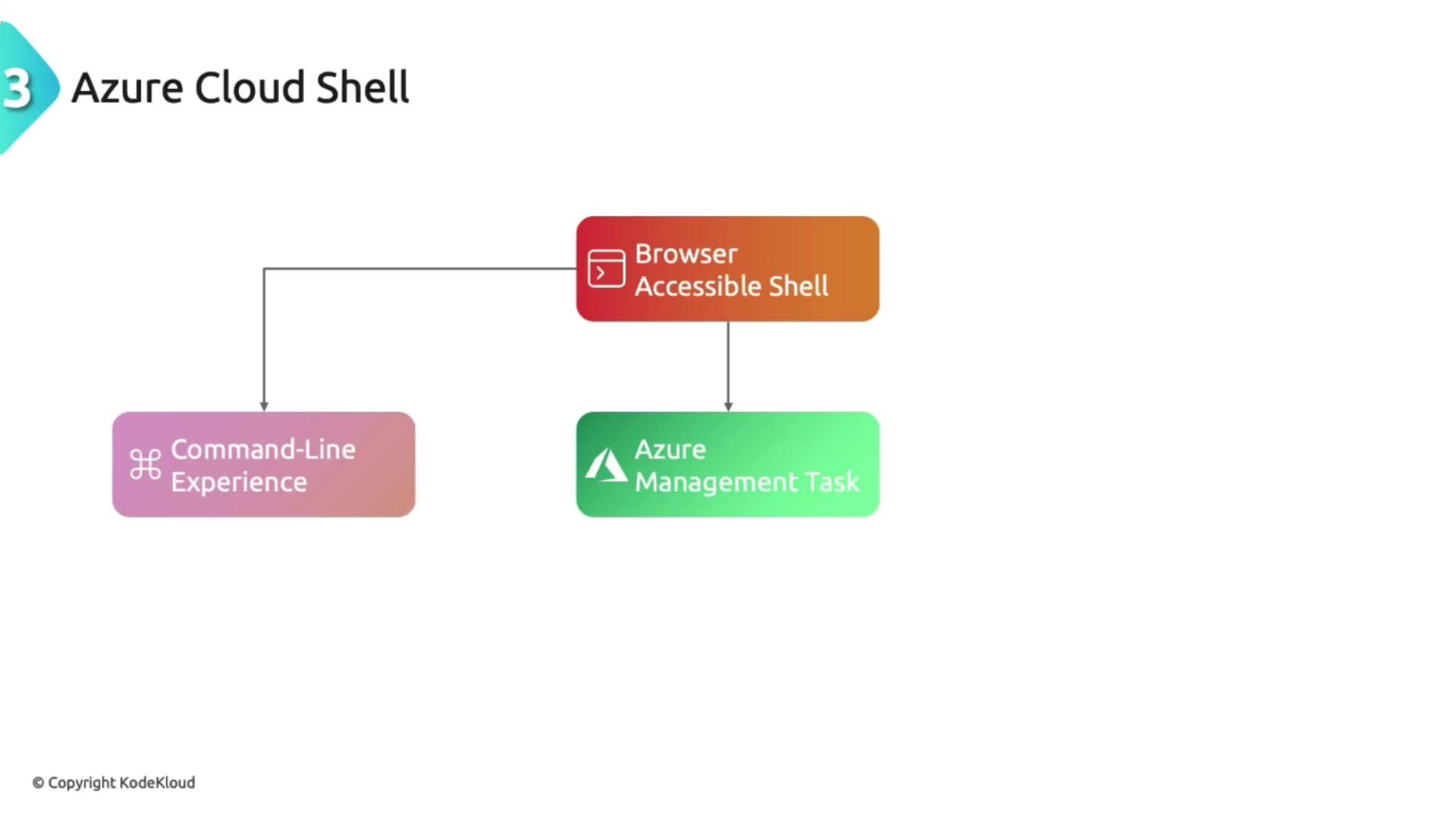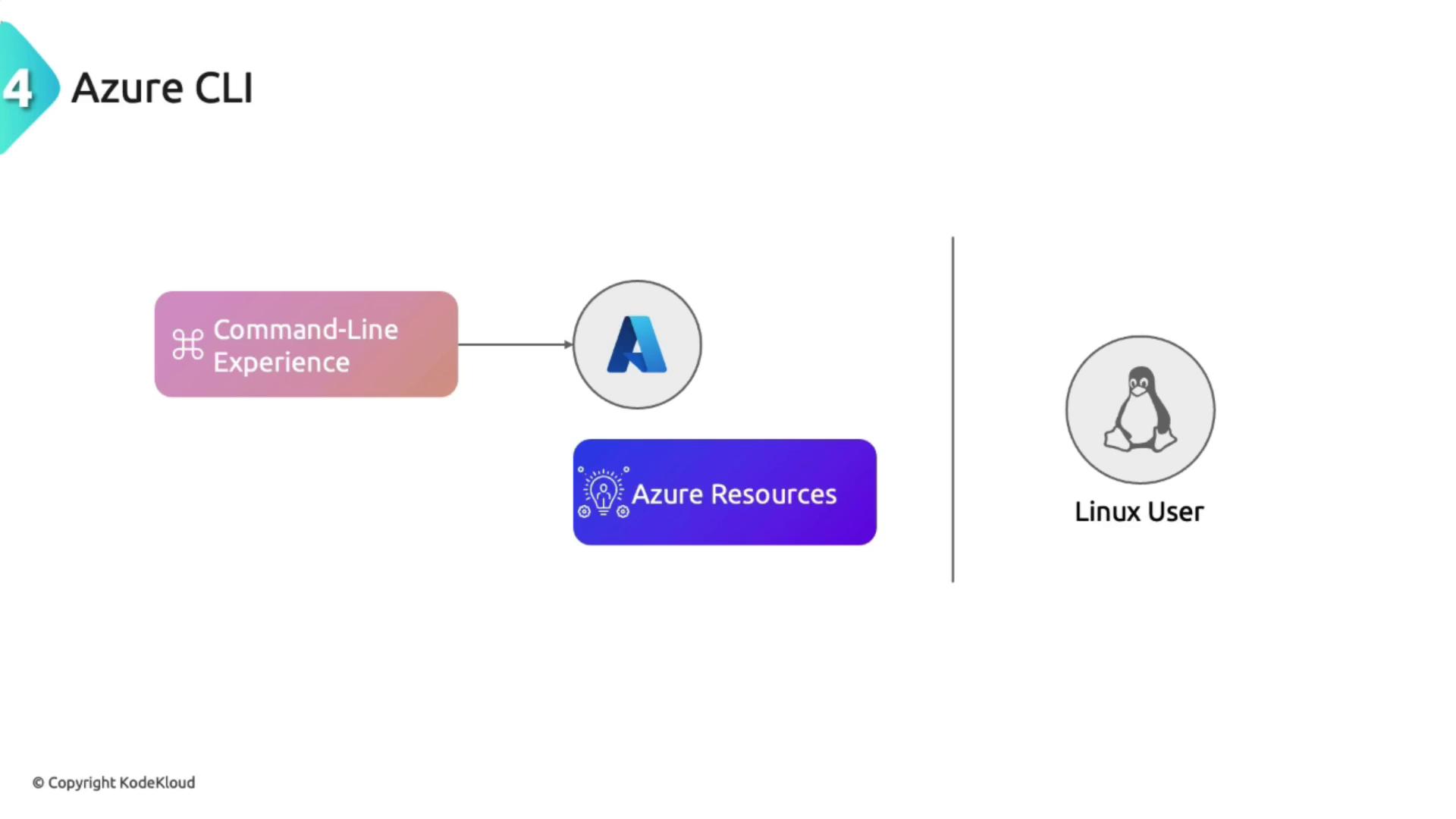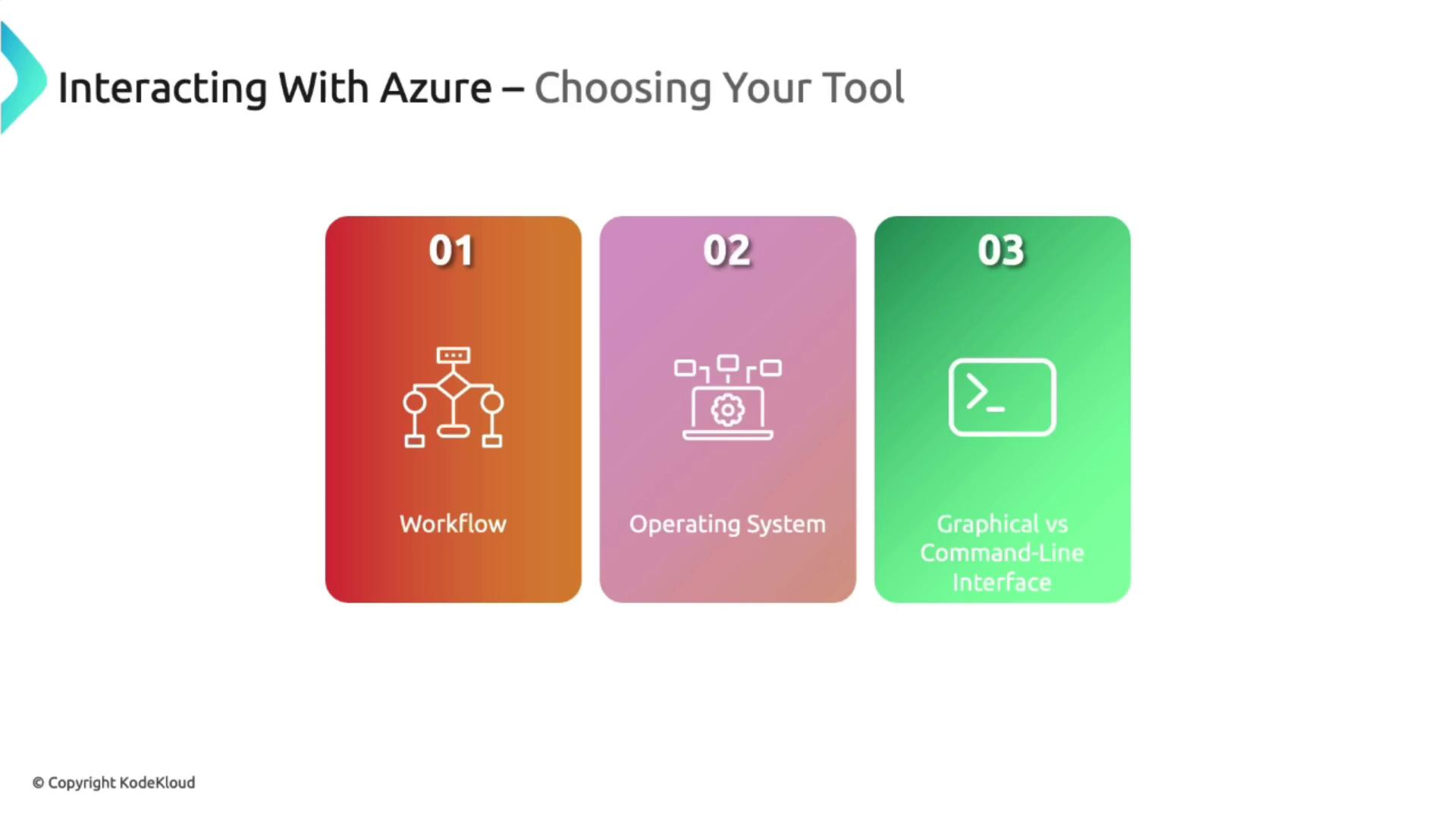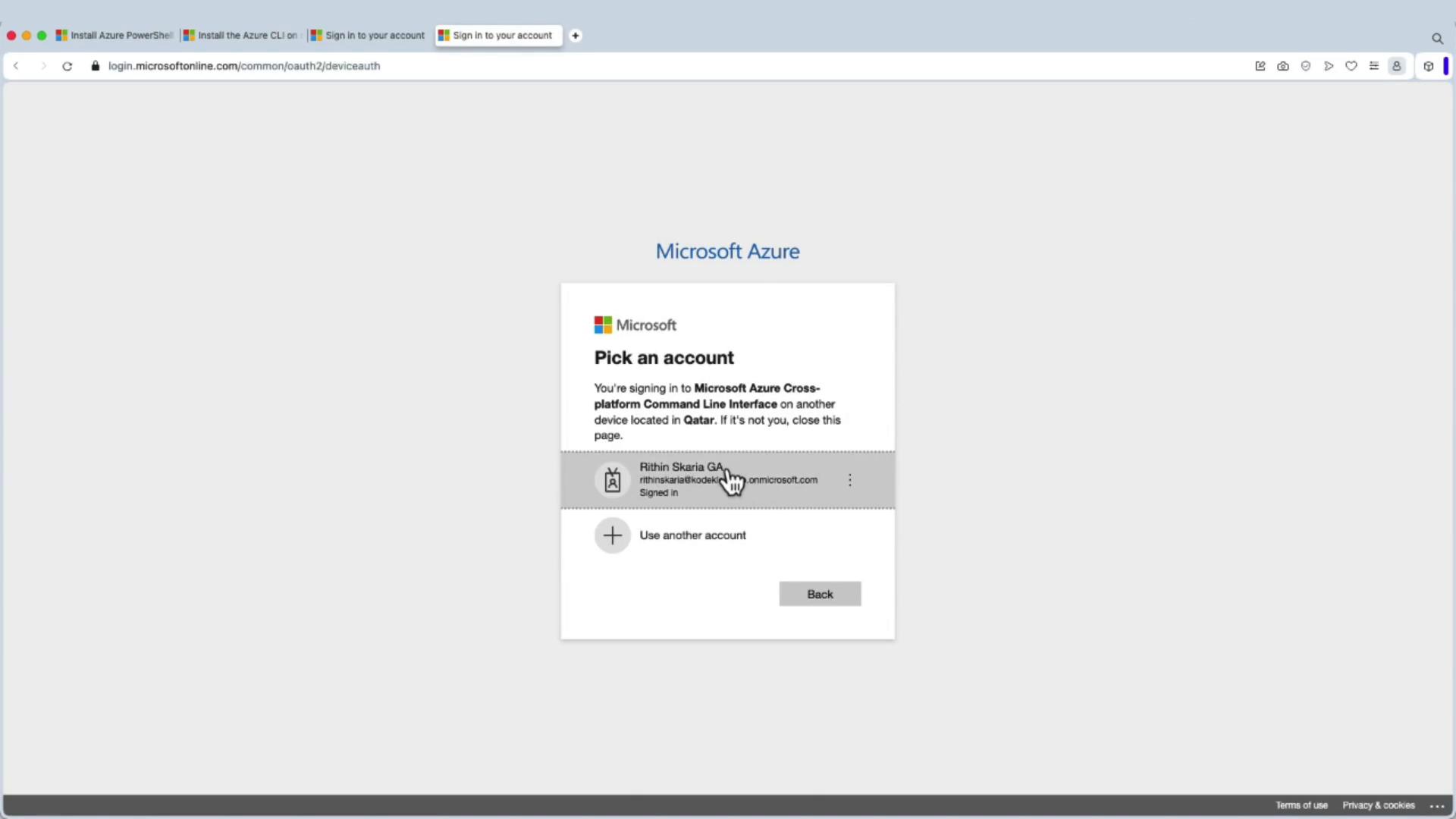AZ900: Microsoft Azure Fundamentals
Resource Deployment Tools
Tools for Interacting with Azure
Azure offers a variety of tools to manage and deploy your cloud resources. While many users prefer the intuitive graphical interface of the Azure Portal, others enjoy automating tasks through scripting using Azure PowerShell, Azure Cloud Shell, or Azure CLI. This guide covers these primary interaction methods, best practices, and code examples to help you efficiently manage your Azure environment.
Overview of Azure Interaction Tools
Azure provides multiple ways to interact with its resources:
- Azure Portal – A web-based graphical interface.
- Azure PowerShell – A module with cmdlets to manage Azure resources via the command line.
- Azure Cloud Shell – A browser-accessible shell pre-configured with the necessary tools.
- Azure CLI – A cross-platform command-line tool ideal for automation and scripting.
In addition to these, advanced users can utilize software development kits (SDKs) and native REST APIs. Beginners should focus on the four primary methods mentioned above.

Azure Portal
The Azure Portal is a user-friendly, web-based interface for managing Azure services. It enables you to effortlessly create, manage, and monitor a wide range of resources—from simple web apps to complex cloud deployments.
![]()
With the Azure Portal, you can quickly deploy or scale resources without needing to write any scripts.
Azure PowerShell
Azure PowerShell provides a robust set of cmdlets that allow you to manage your Azure resources directly from the command line. It is especially useful for automating repetitive or complex tasks.
Below is an example of creating a Storage Account using Azure PowerShell:
New-AzStorageAccount `
-ResourceGroupName MyResourceGroup `
-Name mystorageaccount `
-Location westus `
-SkuName Standard_GRS
Note
This command creates a new storage account and is ideal for repeated deployments.
Azure Cloud Shell
Azure Cloud Shell is a browser-accessible shell that comes pre-configured with essential Azure tools. It eliminates the need for local installations, providing a ready-to-use environment for managing your resources.

Cloud Shell is integrated with the Azure Portal, making it convenient for managing tasks on-the-go.
Azure CLI
Azure CLI is a versatile command-line tool that functions across Linux, Windows, and macOS. It is particularly popular among users with a Linux background or those who prefer a bash-like environment, though its cross-platform support makes it an excellent choice for any operating system.
Here is an example of creating a Storage Account using Azure CLI:
az storage account create \
-n mystorageaccount \
-g MyResourceGroup \
-l westus \
--sku Standard_LRS

Choosing the Right Tool
The best tool for interacting with Azure depends on your workflow, operating system, and preference for a graphical interface or command-line automation. Consider the following:
- Graphical vs. Command-Line: The Azure Portal provides an excellent visual experience for individual or simple deployments. For deploying multiple Virtual Machines or executing complex tasks, automation with PowerShell or Azure CLI is more effective.
- Operating System Considerations: While both Azure PowerShell and Azure CLI work on Linux, Windows, and macOS, users comfortable with bash will likely prefer Azure CLI, whereas those familiar with Windows might lean towards PowerShell.

Tip
For quick demonstrations, the Azure Portal is ideal. When dealing with complex scenarios or repetitive tasks, consider using scripting with PowerShell, Azure CLI, or other Infrastructure as Code tools like Bicep or ARM templates.
Best Practices
- Azure Portal: Ideal for key tasks and visual monitoring.
- Azure PowerShell and Azure CLI: Best used for automating and streamlining deployments.
- Azure Cloud Shell: Convenient for on-the-go management since it requires no local installation; it automatically configures Azure CLI and PowerShell and links to a persistent storage account.
Demonstration of Tools
Installing Azure PowerShell
Before you begin, ensure you have PowerShell installed. Windows usually comes with it pre-installed, while macOS and Linux users need to install PowerShell manually. To install the Azure PowerShell module, run:
Install-Module -Name Az -Repository PSGallery -Force
Installing Azure CLI on macOS
MacOS users can install Azure CLI using Homebrew:
brew update && brew install azure-cli
For installation on Windows and Linux, refer to the official Azure CLI documentation.
Logging into Azure with PowerShell
Open PowerShell (using the command-line tool "pwsh") and run the following command to log in via device authentication:
Login-AzAccount -UseDeviceAuthentication
The console will prompt you similar to:
PowerShell 7.4.1
PS /Users/rithinskar/> Login-AzAccount -UseDeviceAuthentication
Login to Azure
To sign in, use a web browser to open the page https://microsoft.com/devicelogin and enter the code GLLAB36TF to authenticate.
Open your browser, navigate to https://aka.ms/device-login, and enter the provided code. This method is particularly useful when working in a Linux terminal without an integrated web browser.
Upon successful authentication, your subscription details will be displayed:
PS /Users/rithnskaria> Login-AzAccount -UseDeviceAuthentication
Login to Azure, to sign in, use a web browser to open the page https://microsoft.com/devicelogin and enter the code GLLAB36TF to authenticate.
Account SubscriptionName TenantId Environment
------- ---------------- -------- -----------
[email protected] Kodekloud Labs 1e0fa212-37dc-45f5-bb0f-b60867ac64b AzureCloud
Creating a Resource Group and Storage Account with Azure PowerShell
After logging in, list your resource groups and create a new one. For example, to create a resource group named "ps-demo" in the East US region, execute the appropriate command. The output will display various details similar to:
ResourceGroupName Value
------------------------- ------------------------
ResourceId /subscriptions/1b228746-75fd-46ed-8a6b-6a9066d3a3a/resourceGroups/NetworkWatcherRG
ResourceGroupName az900-vm-rg
Location eastus
ProvisioningState Succeeded
...
Once the resource group is set up, you can deploy a storage account by specifying a unique name, location, resource group, and SKU (e.g., Standard_LRS). Missing parameters will prompt the command to request further details.
Logging into Azure with Azure CLI
To log in using Azure CLI with device authentication, run:
az login --use-device-code
Follow the on-screen instructions by visiting https://aka.ms/device-login and entering the provided code. Once authenticated, you'll be securely connected to your Azure account.

List your resource groups with:
az group list
For a table formatted view, use:
az group list -o table
Sample table output:
Name Location Status
---------------------------- ------------ ---------
azurelates-prod-ctl centralindia Succeeded
azurelates-wp-site centralindia Succeeded
backup-rg eastus Succeeded
...
ps-demo eastus Succeeded
Using Cloud Shell
To access Cloud Shell, click the terminal icon at the top-right of the Azure Portal. If it’s your first time using Cloud Shell, you will be prompted to create a linked storage account for persistent file storage.
Once launched, Cloud Shell provides a Bash (or PowerShell) prompt. For example, you might see output like:
WARNING: You're using Az version 11.4.0. The latest version of Az is 11.5.0. Upgrade your Az modules using the following commands:
Update-PSResource Az -whatif -- Simulate updating your Az modules.
Update-PSResource Az -- Update your Az modules.
MOTD: Azure Cloud Shell includes Predictive IntelliSense! Learn more: https://aka.ms/CloudShell/IntelliSense
VERBOSE: Authenticating to Azure ...
VERBOSE: Building your Azure drive ...
PS /home/rithm>
Then, list all resource groups with:
Get-AzResourceGroup | Format-Table
The output will display details such as Resource Group Names, Locations, and Provisioning States in a neatly formatted table:
ResourceGroupName Location ProvisioningState ResourceId
----------------- -------- ------------------ -----------------------------------------------
azuretales-prod-ci centralindia Succeeded /subscriptions/...
...
ps-demo eastus Succeeded /subscriptions/...
This demonstrates how Cloud Shell offers a fully configured environment for managing your Azure resources without any local installations.
Conclusion
In this lesson, we explored the primary tools for interacting with Azure: Azure Portal, Azure PowerShell, Azure Cloud Shell, and Azure CLI. Each tool offers distinct advantages whether you prefer a graphical interface or command-line automation. Stay tuned for our upcoming module, where we will dive into the concept of Azure Arc.
Watch Video
Watch video content